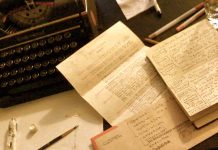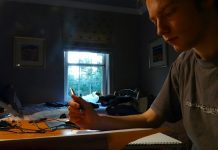
A journalist investigating corruption faces many risks and challenges. Investigative journalist Don Ray shares his experience.
Note: Don’s original article was written in American English. This has been changed to English English to match the house-style of MHM.
Paper trails and the currency of influence
Plotting the geometry of bribery, determining the currency of influence, documenting the paper trail, dealing with threats and retaliation, and knowing the obstacles within are just some of the essential considerations when investigating corruption.
The following are some tips from my work as an investigative journalist. These tips, and others, are used in my media training worldwide.
- Bottom-up approach
- Essential for identifying the results of corruption and the fast-track pathway to the top levels
- The evidence is always visible at the street level.
- Plotting the geometry of bribery and influence
- Corruption always involves more than one person or point or a simple line between two entities.
- Understanding the flow of bribery, influence and extortion requires mapping the triangles, trapezoids, pentagons, etc., of relationships between the parties.
- Developing and protecting essential sources
- They are out there wishing they could find someone to trust with their information.
- Journalists must learn that the seduction process involves creating maximum trust, a fertile environment of factual verification and an understanding of the intrinsic rewards that sources require.
- Determining the currency of the influence
- The more sophisticated the laws and enforcement, the more sophisticated are the vehicles of bribery.
- It’s rarely only money that changes hands.
- Journalists must learn to follow the trails of property, promotion, protection, privilege, payola and employment (of even distant family members).
- Documenting the paper trail
- Public records are essential, but alone they rarely map the complete picture.
- They’re an essential beginning.
- They can provide subtle, telltale indications of the other documents or the people who can fill in the blanks.
- Obstacles from within
- Journalists in every country will encounter a certain amount of resistance from within their own media outlet.
- Unfortunately, some owners and managers of newspapers and radio/television stations and networks are either on the fringes of organised crime and corruption or they are card-carrying players.
- These situations require great awareness and delicate planning.
- Getting it on the record
- More than any other area of reporting, corruption investigations require unending verification and cross-checking.
- Reporters are easy targets of officials and operatives who are bent on using, manipulating or discrediting reporters.
- Teaming up with trusted allies
- There are countless ways of tapping into existing investigations and teaming up with groups or individuals who have already gathered valuable information.
- The internet provides reporters with a worldwide network of experts and potential allies.
- Plus, there are local groups who are already investigating the people and organisations you’ll encounter.
- Dealing with threats and retaliation
- This is not a line of work for everyone. Journalists must always be aware of how vulnerable they and their family members are.
- It’s essential to know how to respond quickly and directly to threats – without throwing in the towel or immediately going into deep hiding.
- Making the story relevant to the readers and viewers
- Reporters tend to want to write about the elite, for the elite.
- The stories must, of course, zero in on the players at the top, but they must address the victims and accomplices at every level.
In the end, the stories must be about people and they must paint pictures of the visible results of this often invisible force.








